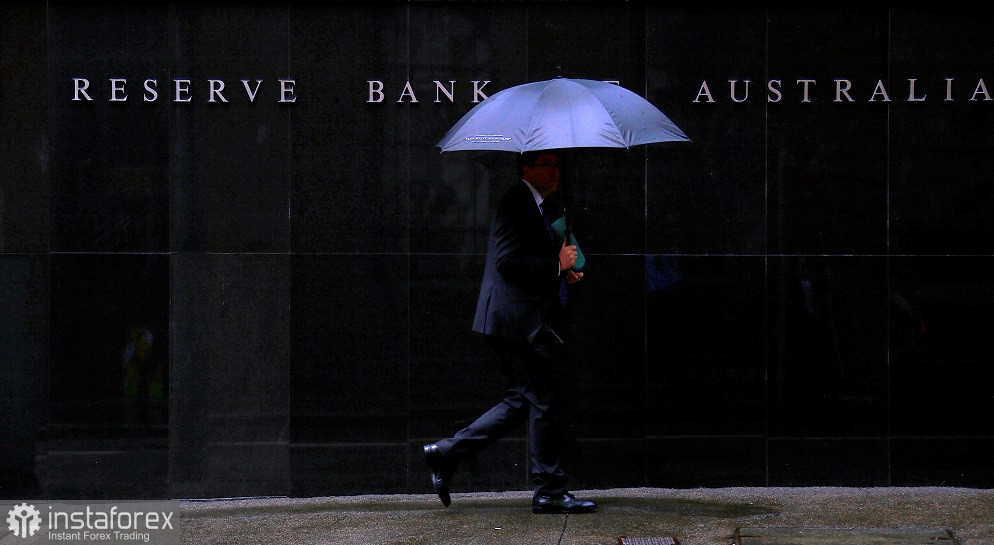The RBA is set to report on its regular meeting this coming Tuesday, the 4th of July. The results are seemingly a foregone conclusion: most experts believe that the regulator will uphold the status quo immediately. However, contrary to the prevailing expectation of a non-reactive stance during the two prior meetings, the RBA broke from predictions by lifting the rate by 25 points on both occasions. This unpredictability maintains an element of intrigue, despite the indicators suggesting a "moderate dovish" approach is on the horizon.
Inflation is decreasing, and the labor market is strengthening
A critical factor contributing to the case for maintaining the current state of affairs is the deceleration of inflation in Australia. The consumer price index growth report, released last week, significantly shaped the expectations for the July meeting. Contrary to the forecasted decline to 6.1%, the CPI unexpectedly fell sharply to 5.6%. This represents the slowest growth pace since April of the preceding year. It's noteworthy to recall that from December 2022 through March 2023, the index decreased from 8.4% to 6.3%. In April, despite projections of a further drop to 6.1%, the index, bucking the expert predictions, rose to 6.8%. This development greatly influenced the outcomes of the June meeting, which saw the RBA raise the rate by 25 points. The situation has since reversed: inflation is in a state of decline and fairly rapid pace.
Given this situation, it's likely that the RBA may opt for a cautious approach. However, the possibility of a "hawkish surprise" cannot be entirely dismissed.

Despite its "red flag" status, Australia's inflation is still a considerable distance from its target, and the downward trajectory remains volatile. As such, it's entirely feasible that the Reserve Bank could lean towards additional monetary policy tightening.
Second, the latest data from the "Australian Nonfarms" also support the possibility of a further 25-point increase. The data revealed was notably strong, with all elements appearing in the "green zone," far exceeding expectations. For example, Australia's unemployment rate in May decreased to 3.6%, down from 3.7% in April (the indicator was predicted to escalate to 3.8%). Another key point to observe is the positive momentum in the rise of employment numbers. The comprehensive figure significantly outperformed predictions, hitting 75 thousand (against an anticipated rise of just 18 thousand). The breakdown of this number suggests that the general growth was facilitated by both full-time and part-time employment (with a ratio of 61.7 to 14.3 thousand). It's recognized that full-time roles usually provide higher income and greater social security than part-time jobs, making the current dynamics overwhelmingly positive.
The increase in employment is a vital factor contributing to the RBA's confidence that Australia will successfully evade a recession. The most recent "Australian Nonfarms" revealed that the annual job growth escalated to 3.4%, up from 3.1% at the start of the year.
The suspense continues
Market opinions diverge regarding the potential outcomes of the Reserve Bank's July meeting. Most experts subscribe to a "moderately dovish" approach, suggesting that the Central Bank will sustain a cautious stance in July but may allow for a rate hike in the future. Nonetheless, some analysts, including those from the UOB Group, caution their clients that the RBA might still pursue a 25-point increase scenario.
Reflecting on the primary points the Reserve Bank of Australia brought up at its June meeting is crucial. The bank flagged that the forecast for inflation's upward risks has risen, implying that the RBA might necessitate "some further" monetary policy tightening. As per Philip Lowe, raising the interest rate will likely instill "greater confidence in inflation reverting to the target level in a reasonable timeframe." Broadly speaking, according to the Central Bank's representatives, how the economy and inflation unfold will determine the future possibilities of a stricter monetary policy.
Given this perspective, the likelihood of the Reserve Bank once again unveiling a "hawkish surprise" this month - as was the case in June and May - cannot be dismissed. If this happens, the Australian dollar will experience strong support. However, the durability of this support will hinge on the accompanying statement's rhetoric. If the regulator allows more increases, buyers of AUD/USD will undoubtedly benefit from the July meeting. Conversely, if the rhetoric carries a "conclusive" implication (i.e., the July hike represents the current cycle's final step), one should tread carefully with any surge in the Australian dollar.
Contemplating long positions on the AUD/USD pair becomes viable after surpassing the resistance level of 0.6710 (the Tenkan-sen line on D1). The immediate goal for a northward shift is the 0.6820 mark: at this price point, the upper line of the Bollinger Bands aligns with the Kijun-sen line on the weekly chart. If a downward trend materializes, the pair will regress to the 65th figure vicinity, specifically, to the 0.6570 support level (the lower line of the Bollinger Bands on the daily chart). Given the persisting suspense around the results of the June meeting, it's currently wise for AUD/USD traders to remain off the market.





















